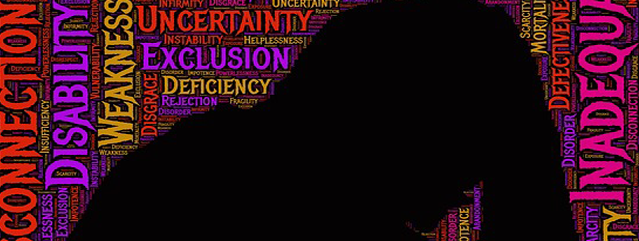How to break the habit of self-doubt

Do you suffer from imposter syndrome, the belief that you’re not really a writer, a photographer, an inspirational speaker? And how often to you hear people say, “Just get over it” or “Stop feeling bad for yourself.” Do those responses make you want to scratch someone’s eyes out? Well, if so, you’re not alone. I get it, believe me. But that doesn’t mean self-doubt should be running your brain’s control tower. While I told myself this day after day, over too many years to count, I continued to let self-doubt into my mind’s home. Self-doubt followed me into the bedroom each night, into the kitchen while I waited for the teakettle to come to a boil, and sat next to me at the dinner table, at my desk.
But I recently kicked self-doubt out of my home, and double-locked the door, just in case it tries to break in with the slip of a credit card. I admit, though, I needed a lot of extra emotional muscle to help me follow-through with the eviction. The name behind the muscle is motivational powerhouse, best selling author, and award winning CNN commentator Mel Robbins. A writing peer introduced me to her work, and when I learned that she ran an online class called “How to break the habit of self-doubt and build confidence” I knew I had to sign up. I recently finished the last session (there are a total of 16), and I’m still energized by what I learned, by how much Mel’s class has changed how I think about myself. Believe me, if you take her class, I swear you’ll become a Mel addict.
Mel is honest from the get go, and shares her own difficulties with self-doubt and anxiety. At one point it became so debilitating for her she struggled to get out of bed most mornings. Finally, she came up with what she calls the “5 second rule.” From the moment she talked about her “5 second rule” as a solution to halt the self-doubt loop that plays like a skipping record through our brains, I was hooked. All you have to do is say “5-4-3-2-1” each time your mind is attacked by self-doubt, procrastination, anxious thoughts, worries. So if you can’t seem to drag yourself out of bed in the morning say, “5-4-3-2-1. Get up.” Say it every single morning. Say it each time you hesitate to send that email you’ve been wanting to send to your boss or friend or family member. Say “5-4-3-2-1” then get your butt in the chair, and write for five minutes (Mel quotes research that says most people will continue what they are working on for much longer; it’s the initiation part that slows us down.)
Along with her “5 second” solution to self-doubt, she has a lot more to offer, much of it backed my science: the traps that make us question ourselves, the connection between self-doubt, worry, and anxiety, the five steps toward self-confidence, and how to reframe anxiety into excitement. If finances are tight for you, no worries, you can meet Mel on YouTube and watch some of her sessions on self-doubt for free. So no justifications, no saying “It won’t work for me” or “I don’t have time.”
One more thing from Mel: “No phone in your bedroom.” Why? Because she wants you to “engage in behaviors that put you in control of your thoughts.” When the phone is next to your bed, what is the first thing you’re going to do when you wake up? Look at your phone. “You’re dreams are not on your phone,” she says. “You’re priorities are not not on your phone. It’s other people’s garbage.”
If hard statistics are what you need to convince you to put the phone away, here it is: The average worker spends 6.3 hours a day on emails. According to a Time Magazine article, Americans collectively check their smart phones as much as 8 billion times a day. On average, individuals check their phones 46 times a day.
Let’s do this together: Put the phone away. Here, I’ll count with you: 5-4-3-2-1. Do it!
Read More




Recent Comments